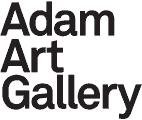Public Programme
Public Programme
Correspondences: Panting/Robinson
Adam Art Gallery
Saturday 12 October, 11am
11am: Peter Robinson in conversation with Christina Barton
11.45am: Sam Cornish, Curator’s Tour
Hear Peter Robinson discuss his installation with Christina Barton before taking a tour with guest curator Sam Cornish of John Panting: Spatial Constructions.
Exhibition Tour: State of the Art
Adam Art Gallery
Tuesday 15 October, 12pm
Join David Maskill and his ARTH 403 Honours students to learn about the works in State of the art: reproductive prints from the Renaissance to now.
Lecture: Sam Cornish, Improvising feeling: Panting’s sculpture in context
2013 Lectures in Art History and Visual Culture, presented with the Art History Programme, Victoria University of Wellington
Murphy LT 101, Kelburn Campus, Victoria University of Wellington
Tuesday 22 October, 6pm
Sam Cornish, curator of John Panting: Spatial Constructions, will situate his exhibition against the British contribution to the wider project of modernist abstraction. An important part of the dynamism of this moment has been neglected: caught between the generations of Moore and Hepworth and the one of the “expanded field” of the 1970s, or reduced to that of Anthony Caro, its most famous exponent. An understanding of the work of artists such as John Panting, at once a continuation and rejection of the figurative sculptural tradition, is an important part of recapturing the diversity of sculpture at this time.
Sam Cornish is a London-based writer on abstract art. Educated at Cambridge and Leeds, he has written on abstract artists including Bram Bogart, Robert Motherwell, Katherine Gili, and Peter Hide. His work on John Panting is part of a larger research interest in the steel sculpture of the 1960s and 1970s. He is editor of the website abstractcritical.
4. Round-Table: New Zealand Sculpture in the Expanded Field
Adam Art Gallery
Tuesday 18 November, 6pm
Join a distinguished panel for a discussion of the absorption, adaptation and dissemination of modern British sculpture by a generation of New Zealand artists in the 1960s and 1970s, and beyond. What is the legacy of their work, and what can we learn from their example?


